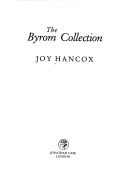Before he was executed for his part in the Jacobite rebellion, Siddal had lived near Manchester in a farmhouse now altered and the home of the author of this book. Curious about Siddal's silence at the trial, Joy Hancox came to believe he had gone to the gallows to protect someone else. Her investigations revealed a close connection between Siddal and his neighbour John Byrom, a respected member - along with Newton, Wren and Hans Sloane - of The Royal Society. Byrom, who was known to harbour Jacobite sympathies, invented a system of shorthand (later developed by Pitman) which might well have provided protection against any charge of heresy after he formed his Cabala Club. Already his loyalty to the Stuarts had denied him a career at Cambridge and in the Church. When Joy Hancox finally tracked down Byrom's collection of 516 drawings, scholars of several disciplines began to testify to the incalculable value of the discovery. She little expected the revelations these drawings were to yield, nor the clandestine history she was to uncover in the search for their origins.
The collection spans two centuries, from the reign of Elizabeth I to that of George II, and involves the courts and noble families of Europe. Cabalistic philosophy, mysticism, freemasonry, cosmology and navigation link the drawings to the emergence of experimental science from its association with magic. The power of number and proportion is the key to the whole collection, which includes designs for medieval Templar churches, the hidden geometry of such buildings as King's College Chapel in Cambridge and Westminster Abbey, working drawings for early precision instruments and, perhaps most remarkable of all, plans for the original Globe Theatre, the Rose and five other Elizabethan playhouses.
- ISBN10 0224030469
- ISBN13 9780224030465
- Publish Date 14 May 1992
- Publish Status Out of Print
- Out of Print 10 April 2014
- Publish Country GB
- Publisher Vintage Publishing
- Imprint Jonathan Cape Ltd
- Format Hardcover
- Pages 320
- Language English
